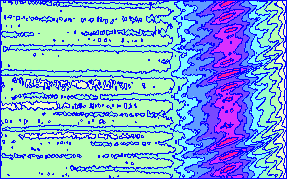
IMPULSE
A project of the RTRA-STAE Foundation

Modeling magnetized plasmas for space propulsion
The IMPULSE project
IMPULSE is a project of the RTRA STAE Foundation
The aim of the IMPULSE project is to improve the basic knowledge and the predictive capabilities of the models of low pressure partially magnetized plasmas applied to space propulsion.
Electric propulsion for satellites is becoming a mature technology.The appeal of electric propulsion is that it offers exceptional propellant efficiency (compared to traditional chemical propulsion) to give spacecraft the capability of large delta-V maneuvers at the cost of relatively little propellant. It is predicted that more than half of new satellites will carry full electric propulsion by 2020. This means that electric thrusters will be used not only for station keeping but also for orbit raising or primary propulsion. Electric propulsion is also considered for a variety of deep space human and robotic exploration missions. On the other hand the rapid development of CubeSat and other small spacecraft missions requires the design of new and inovative electric thrusters.
In most electric thrusters (Hall thrusters, gridded ion sources using RF plasmas sources or electron bombardment, cusped-field thrusters, ...) the plasma electrons must be magnetically confined. Although electric propulsion technolgy is becoming mature, it is still difficult to design new thrusters based solely on computer aided design and simulations. Hall thrusters, for example are still designed semi-empirically because the physical models and numerical codes are not fully predictive.
The difficulty in modeling the plasma of electric thrusters is due to the presence of the magnetic field which creates a strong anisotropy in electron transport and can be responsible for plasma instabilities and turbulence (as in fusion plasmas). However, because electrons are strongly magnetized while ions are not or are only weakly magnetized, the physics of low pressure partially magnetized plasmas is very specific and different from that of fusion plasmas. This distinct area of basic plasma physics has been poorly explored and is not well understood but is within the reach of current analytical and numerical capabilities. Improving our qualitative and quantitative understanding of these plasmas is critical for electric propulsion.
IMPULSE involves physicists, engineers and applied mathematicians from several Toulouse laboratories, that work together to improve the models and methods used to describe the magnetized plasmas of electric thrusters. Interactions with the international community is an important aspect of the project, with invitations of experts in the field, and organization of seminars and workshops.